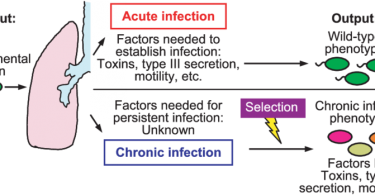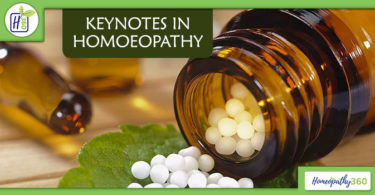
ABSTRACT: Varicocele is the most common cause of infertility in men, the effect of a varicocele can get worse with age. It is the abnormal dilatation of the pampiniform plexus of the testicular veins, which drain the testicles. About 17 percent of boys between the ages of 13-25 years old have varicoceles. Apart from the immediate surgery (open and laparoscopic), homoeopathic medicines have proved its worth by reverting most the effects of varicocele in adolescents.
KEYWORDS:
Varicocele,
adolescent, atrophy, pampiniform plexus, homoeopathy.
INTRODUCTION: A varicocele results from an abnormal dilatation of venous network. It is the abnormal dilatation of the pampiniform plexus of the testicular veins, which drain the testicles. Initial presentation usually occurs during puberty, with incidence in 13-year-old adolescent boys equal to that of an adult man (15%).1
HISTORY: References to dilated and tortuous veins of the spermatic cord, now referred as a varicocele, occurred as early as 1885. It was known to be associated with ipsilateral testicular atrophy, which was reversible after ligation.1
ETIOLOGY: Does not happens to every male, but fairly common. During puberty, the testicle grows quickly and need more blood delivered to them. Sometimes, veins cannot supply this extra blood, if veins and valves aren’t working as well as the should. Hence, some of the blood continues to flow back, create a back up and ends up in varicocele.2
About 17 percent of boys between the ages of 13-25 years old have varicoceles. More than 90 percent of the time, they appear on the left testicle and they mostly occur during or after puberty.3,11
PATHOPHYSIOLOGY:2In all males, a structure called spermatic cord (which contains arteries, veins, nerves and tubes) provides a connection and circulates blood to and from the testicles. Veins, which has valves caries blood to the direction of heart and valves prevent it from backward flow.
Sometimes, these valves may fail, results some backflow of blood; reverse of blood flow. This backed up blood can collect and pool in the veins, which causes veins to stretch and get bigger.
SYMPTOMATOLOGY4: Most of the time, boys might not even know that they have a varicocele. Usually, it is noticed during a testicular examination.
- On examination: Veins will feel like a “bag of worms/spaghetti” which is prominent while standing, disappear on lying down.
- Dull discomfort, or heaviness of scrotum, after a heavy exercise, hot weather or standing for a longer time.
- A dull ache in the testicle.
- A feeling of heaviness or dragging in the scrotum.4
A varicocele is the most common cause of infertility in men, the effect of a varicocele can get worse with age.4
Studies shows that varicocele can have a significant effect upon testicular growth and function in adolescent males. Early treatment is chosen because delaying treatment may make growth and function problems irreversible.5
Currently, there is significant evidence that a varicocele can produce testicular injury in teenagers. Experts do not know the exact cause of the injury. However, varicocele that involves one testicle can cause a temperature increase in both testes, which in turn can cause varying side effects on testicles.
TREATMENT5: Doctors usually decide whether adult men with a varicocele should have surgery based upon documented evidence of infertility and abnormal semen sample.
When it comes to adolescents, these criteria aren’t used because infertility hasn’t documented and it is difficult to obtain a semen example. However, it is not reasonable to postpone treatment of all adolescents who have a varicocele because some of them may become infertile if they aren’t treated as adolescents.5
Experts agree that surgery should be considered if at least one of the following abnormalities are present:5
- Abnormal semen analysis
- The testicle on the side of the varicocele is smaller
- The varicocele involves both the right and left sides
All people who have varicocele should have annual testicular exams to ensure the testicle are growing normally.5
After boys turn 17, they should have annual semen analysis toc heck fertility. As long as the testicular exam and semen analysis remain normal, surgery would not be necessary.
VARICOCELE REPAIR; SURGICAL METHODS:5
- Laparoscopic surgery:5During laparoscopic surgery, the surgeon will make three small incisions in the abdomen. Surgeon will pass tiny instruments through those incisions to visualise and repair the varicocele. Open surgery and Laparoscopic surgery have same success rate.
- Open surgery:5 Open (traditional surgery) is done on an outpatient basis. The surgeon usually uses general anaesthesia to put patients to sleep during procedure. A retro-peritoneal incision would be made to reach affected veins and tie them off from the blood supply.
HOMOEOPATHIC MANAGEMENT:
RUBRICS IN HOMOEOPATHIC REPERTORIES: –
Male, Varicocele, spermatic cord:6:
Aur., bell., calc., coll., ham., lach., lyco., merc-i-r., nux-vom., phos-ac., podo., puls., sulph
Blow from: ARN., bell-p., ham., puls.
MALE, Varicocele8:
Arn., calc., carb-v., coll., ham., lach., lyco., merc-i-r., nux-v., ph-ac., podo., puls., sil., sulph.
MALE SEXUAL SYSTEM, Varicocele:9
Acon., arn., ferr-phos., ham., lach., nux-v., plumb., puls., ruta., sulph.
MALE ORGANS, TESTES, Varicocele:7
Lyco., arn., ruta., ferr-ph., hamm.
VARICOCELE:10
Coll., ferr-ph., fl-ac., hamm., puls.
- HAMAMELIS VIRGINICA: Venous congestion, haemorrhages, varicose veins, soreness of the affected part. Acts on coats of the veins causing relaxation with consequent engorgement. Passive venous haemorrhages from any part. Pain in spermatic cord, running to the testes. Varicocele, pain in testecles. Orchitis, testicles enlarged, hot and painful.
- RHODODENDRON: Pain in testicles, worse left, swollen, painful, drawn up. Orchitis, glans feels crushed. Induration and swelling of testes after gonorrhoea.
- PHOSPHORICUM ACIDUM: Debility is very marked, producing nervous exhaustion. Mental debility first and physical debility. Ailments from acute diseases, excesses, grief, loss of vital fluids. Seminal vesiculitis. Sexual power deficient; testicles tender and swollen. Prostatorrhoea, even when passing soft stool. Eczema of scrotum.
- PULSATILLA NIGRICANS: Indicated after abuse of iron tonics and after badly managed measles. Indicated when first serious impairment of health; referred to the age of puberty. Orchitis; pain from abdomen to testicles. Pain and tenesmus in urinating, worse lying on back. Acute prostatitis. Stricture; urine passed only in drops.
- PLUMBUM METALLICUM: Constrictive sensation in internal organs. Loss of sexual power. Testicles drawn upward, feels constricted. <Night, Motion. >Rubbing, Hard pressure. Localised neuralgic pains, neuritis.
- NUX VOMICA: Bad effects of sexual excesses. Constrictive pain in testicles. Orchitis. Weakness and irritability. Spermatorrhoea with backache.
CONCLUSION: A varicocele is the most common cause of infertility in men, the effect of a varicocele can get worse with age. It is the abnormal dilatation of the pampiniform plexus of the testicular veins, which drain the testicles. About 17 percent of boys between the ages of 13-25 years old have varicoceles. Homoeopathic remedies like Rhododendron, Pulsatilla nigricans, Acidum phosphoricum, Hamamelis virginica, has good action over testicular venous engorgement and helps in treating the varicocele in adolescents successfully.
REFERENCES:
- Elmore JM, Garcia-Roig ML, Varicocele in Adolescents, Medscape-Drugs & Diseases, Paediatrics: Surgery, Nov 12, 2018.
- Figuero TE. MD, Varicocele, TeensHealth from Nemours, KidsHealth, February 2017.
- Douglas C, Thomas KF, Shukla AR, Weiss Dana, Varicocele, Children’s Hospital of Philadelphia.
- Douglas C, Kolon F Thomas, Shukla AR, Weiss D, Causes and Effects of Long-term Voiding Dysfunction, Varicocele News and Updates, September 30 2013, Urology Update.
- Child Varicocele, Beamont
- Murphy R. MD, Homoeopathic Medical Repertory, A Modern Alphabetical and Practical Repertory, Third Revised edition, Indian Edition. p.1502
- Boger CM, Boger Boenninghasuen’s Characteristic and Repertory with Corrected Abbreviations, Word Index & Thumb Index. Page no: 651, New Print Edition, B Jain Publications.
- Schroyens F. Synthesis Repertory, Version 7, (Indian 7.1 version), p.905
- Boericke W, Boericke’s New Manual of Homoeopathic Materia Medica with Repertory, Third Revised and Augmented Edition Based ON Ninth Edition, p.824
- Phatak S.R, A Concise Repertory of Homoeopathic medicines, Alphabetically Arranged.
- Wilkison IB, Raine T, Oxford Handbook of Clinical Medicine, Interrnational Edition, 10th edition, p.650-651.
About Author:
Dr Sajjad Nasir
MD – Part I, Department of Paediatrics,
Father Muller Homoeopathic
Medical College and Hospital,
Deralakatte, Mangalore.
Guide: Dr Jyoshna Shivaprasad
Professor and HOD, Paediatrics





